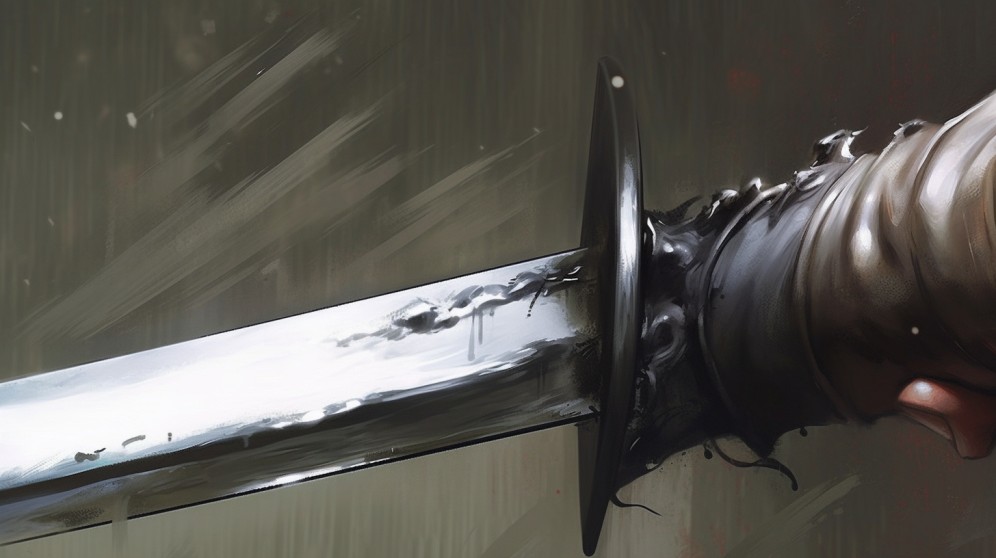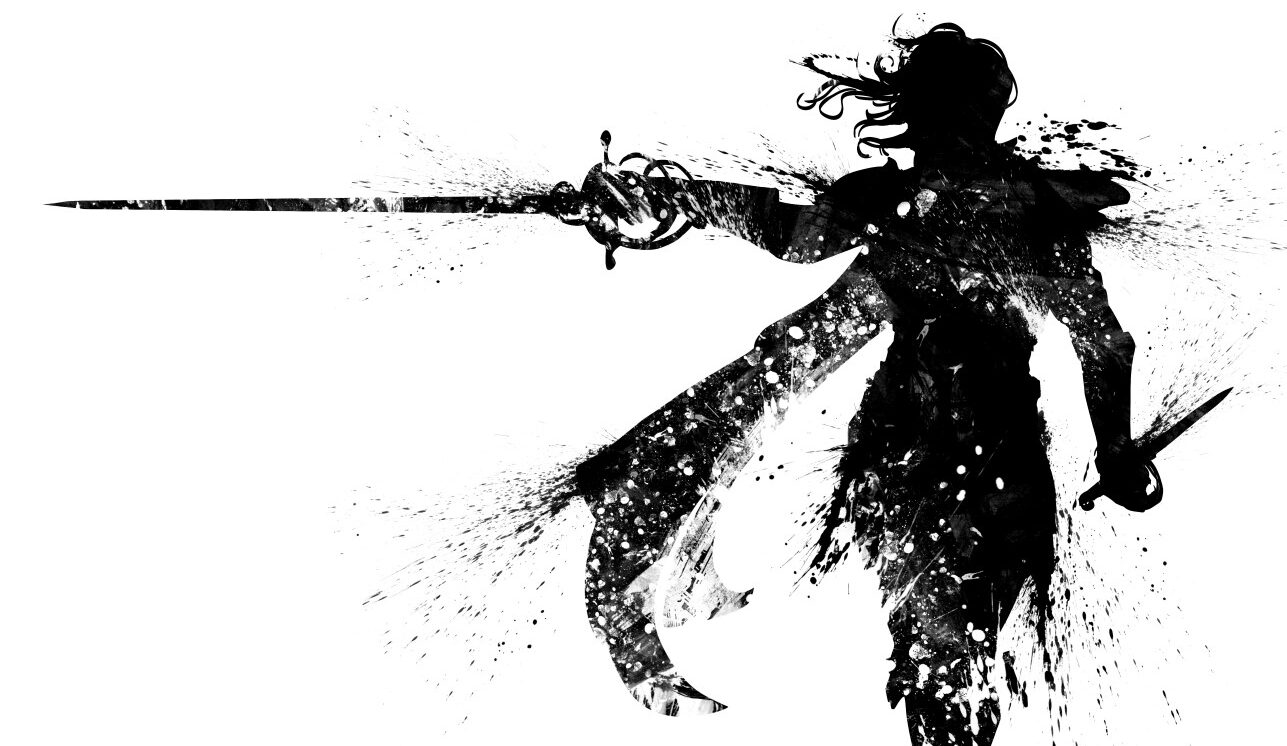As gamers ourselves, we understand the importance of choosing the right weapon to defeat our enemies. There are many ways to drop an enemy’s HP, but if you’re not a spellcaster, choosing the right weapon is crucial. With so many options to choose from, it can feel overwhelming.
That’s where our Rapier 5e guide comes in. We want to help you make an informed decision when it comes to choosing the right weapon for your character.
When it comes to choosing a weapon, there are many factors to consider. For example, the Strength modifier is used by most weapons to increase your attack roll and damage bonus. This can be a great benefit to buff characters like barbarians. However, what if your character is a Rogue who is more skilled in dexterity and agility?

This is where the Rapier comes in. If you’re proficient with martial weapons, have an aptitude for agility, and prefer to use one hand instead of both, the Rapier might be the perfect weapon for you.
One of the unique things about the Rapier is that it is the only weapon in the Weapons Table that can be used as a martial melee class weapon and has only the finesse property. This means that it uses your Dexterity modifier instead of your Strength modifier when making attack rolls and calculating damage.
Of course, whether or not the Rapier is the right weapon for you will depend on your character’s individual strengths and weaknesses. That’s why we encourage you to read our Rapier 5e guide to find out if this weapon is the right fit for your character. With our help, you’ll be able to make an informed decision and take down your enemies with ease.
What is the Rapier?

A rapier is a type of sword used in martial combat that deals 1d8 piercing damage, weighs 2 lbs, and costs 25 GP. It has a slim and balanced design with two sharp edges and a sharp point, and is primarily used for thrusting and stabbing attacks. This piercing damage is the primary way the rapier deals damage.
The rapier is considered a martial weapon, meaning that it requires a certain level of proficiency to use properly and effectively. If you lack proficiency with the weapon, you cannot use your proficiency bonus to increase your attack roll when using it against an enemy.
One of the unique properties of the rapier is its finesse property, which sets it apart from other melee weapons. The finesse property means that the rapier uses your Dexterity modifier instead of your Strength modifier when making attack rolls and calculating damage.
In terms of appearance, a rapier typically has a protective hilt located at the end of the sharp blade. Its sleek and narrow design makes it quick and precise, allowing for swift and accurate attacks.

The rapier is a powerful and versatile weapon that can be an excellent choice for characters who prioritize agility and finesse over brute strength.
Finesse in D&D
During combat in D&D 5e, you must make an attack roll by rolling a d20 against your opponent’s armor class (AC) to determine whether your attack hits or not. If you are proficient with your weapon, you can add your proficiency bonus to the attack roll. Additionally, you can add an ability modifier to the attack roll if it lands.
Usually, the ability modifier used is the Strength modifier, but this is where finesse comes into play. If your weapon has the finesse property, you can add your Dexterity modifier instead of your Strength modifier. This can be useful for characters who want to use weapons but have more invested in their Dexterity score than their Strength score.

For example, let’s say your character is a level one rogue with a sword, and they have a Strength modifier of -1 and a Dexterity modifier of +2. They attack an opponent who has a 15 AC with a rapier and roll an 11. First, as a rogue, they have rapier proficiency, so they add their proficiency bonus of +2 to their attack roll, making it a 13. Next, they can add their Dexterity modifier because the rapier has the finesse property.
In this case, the attack roll would be a 15, which is enough to successfully hit the opponent. However, if the rapier did not have the finesse property, the character would have to add their Strength modifier of +1, resulting in a total attack roll of 12, which would not be enough to hit the opponent with an AC of 15.
What Classes Can Use Rapiers?
In D&D 5e, rapiers are considered to be martial weapons, which means that not all classes are proficient in using them. Although anyone can use a rapier, you cannot increase your proficiency bonus on your attack rolls if you are not proficient with the weapon. This may seem like a small detail, but proficiency bonuses can make a significant difference in combat, especially at higher levels.
Out of all the classes, only six have proficiency with the rapier: Barbarian (as an armed weapon), Bard, Fighter (as an armed weapon), Paladin (as an armed weapon), Ranger (as an armed weapon), and Rogue. It is worth noting that most of these classes are more focused on weapon fighting than magical spells.

The Ranger and Paladin gain spellcasting abilities at level 2, but many of their spells are focused on supporting the party rather than dealing damage. The Fighter and Rogue have subclasses that allow them to gain spellcasting abilities, such as the Eldritch Knight and Arcane Trickster, respectively. These subclasses are only available at level 3, however.
Overall, characters with these classes will be more accustomed to using weapons than relying on magical spells in combat. It is important to note that just because a character is proficient in using a rapier doesn’t mean they have to use it exclusively. Different classes may have different preferred weapons, and characters can always switch between them depending on the situation.
Which Classes Start with a Rapier?
In D&D 5e, any class that is proficient in the use of rapiers can begin the game with one, except for the Ranger class. Rangers have the option to choose between two melee weapons or two shortswords as their starting weapon.
Most classes have multiple options when choosing their starting weapon, and rapiers are often available as a choice for “martial weapons.” Here are the five classes that can begin the game with a rapier, along with the weapon options available to them:
- Barbarian: A great axe or another martial melee weapon.
- Bard: A rapier, a longsword, or any other simple weapon.
- Fighter: A combination of a shield and a martial weapon, or two martial weapons.
- Paladin: A combination of a shield and a weapon, or two weapons.
- Rogue: A rapier or a shortsword.

It’s important to note that just because a class can begin with a rapier, it doesn’t mean that they are required to use it exclusively. Characters can always switch between weapons depending on the situation and their personal preferences.
Are Rapiers Magical?
Rapiers in D&D 5e are not commonly magical items. While they can be used as martial weapons, they are not typically found in everyday shops. However, there are some magical rapiers available in the game, and below is a list of their names, rarity, attunement requirement, source, and other details.
| Item Title | Rarity | Attunement Required? | Source |
|---|---|---|---|
| +1 Rapier | Uncommon | No | Dungeon Master’s Guide, page 213 |
| +2 Rapier | Rare | No | Dungeon Master’s Guide, page 213 |
| +3 Rapier | Very rare | No | Dungeon Master’s Guide, page 213 |
| Acheron Blade Rapier | Rare | Yes | Explorer’s Guide to Wildemount, page 265 |
| Corpse Slayer Rapier | Rare | Yes | Explorer’s Guide to Wildemount, page 266 |
| Dancing Rapier | Very rare | Yes | Dungeon Master’s Guide, page 161 |
| Defender Rapier | Legendary | Yes | Dungeon Master’s Guide, page 164 |
| Dragon Slayer Rapier | Rare | No | Dungeon Master’s Guide, page 166 |
| Drow +1 Rapier | Unknown | No | Monster Manual, page 126 |
| Flame Tongue Rapier | Rare | Yes | Dungeon Master’s Guide, page 170 |
| Frost Brand Rapier | Very rare | Yes | Dungeon Master’s Guide, page 171 |
| Giant Slayer Rapier | Rare | No | Dungeon Master’s Guide, page 172 |
| Hellfire Rapier | Uncommon | No | Baldur’s Gate, Descent Into Avernus page 223 |
| Holy Avenger Rapier | Legendary | Yes | Dungeon Master’s Guide, page 174 |
| Luck Blade Rapier | Legendary | Yes | Dungeon Master’s Guide, page 179 |
| Mind Blade Rapier | Rare | Yes | Volo’s Guide to Monsters page 181 |
| Moon-Touched Rapier | Common | No | Xanathar’s Guide to Everything, page 138 |
| Nine Lives Stealer Rapier | Very rare | Yes | Volo’s Guide to Monsters page 183 |
| Rapier Armblade | Common | Yes | Eberron: Rising From the Last War, page 276 |
| Rapier of Certain Death | Rare | No | Explorer’s Guide to Wildemount, page 270 |
| Rapier of Life Stealing | Rare | Yes | Dungeon Master’s Guide, page 206 |
| Rapier of Vengeance | Uncommon | Yes | Dungeon Master’s Guide, page 206 |
| Rapier of Warning | Uncommon | Yes | Dungeon Master’s Guide, page 213 |
| Rapier of Wounding | Rare | Yes | Dungeon Master’s Guide, page 207 |
| Vicious +1 Rapier | Unknown | No | Acquisitions Incorporated, page 149 |
| Vicious Rapier | Rare | No | Dungeon Master’s Guide, page 209 |
It’s important to note that this is not an exhaustive list, and there may be other magical rapiers available in the game as well.
Should You Use the Rapier?
The rapier is a good weapon in D&D 5th edition. It has a high damage output of 1d8 piercing damage, which is higher than other finesse weapons like the shortsword and scimitar. Additionally, it has the finesse property, allowing you to use your dexterity modifier instead of strength for attack and damage rolls, which can be useful for characters with higher dexterity scores. However, it does not have the light property, so it cannot be used for two-weapon fighting unless you have the Dual Wielder feat. Overall, the rapier is a solid choice for characters looking for a high damage, finesse weapon.
Personally, I like a dexterity-based Battlemaster Fighter with moves like Parry and Riposte for maximum fencer flavor, but any class that can do well in melee can do well at fighting with a rapier.
FAQs:
- Damage: The rapier deals 1d8 piercing damage.
- Cost: The rapier costs 25 GP.
- Reach: The rapier has a reach of 5 feet.
- Dual Wielding: You need the Dual Wielder feat to dual wield rapiers.
- Shield: You can wield a rapier and a shield to increase your AC.
- Shortsword vs Rapier: If you want to dual wield, shortswords are better. If you want more damage and intend to carry a shield, use a rapier.
- Scimitar vs Rapier: Scimitars deal slashing damage, while rapiers deal piercing damage. Use the appropriate weapon depending on the enemy you’re facing.
- Longsword vs Rapier: Longswords deal the same damage as rapiers (1d8 piercing), but can also deal 1d10 slashing damage when used with two hands.













